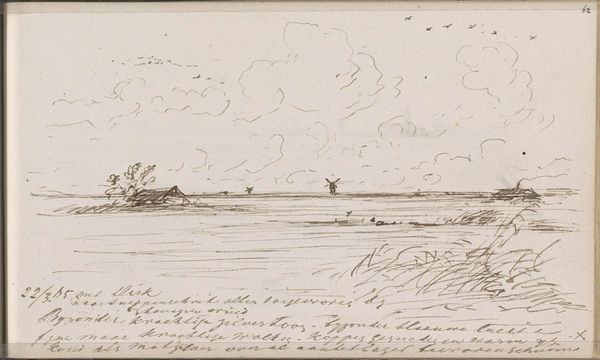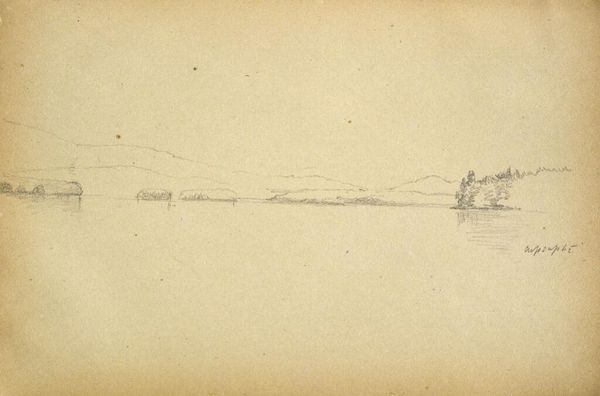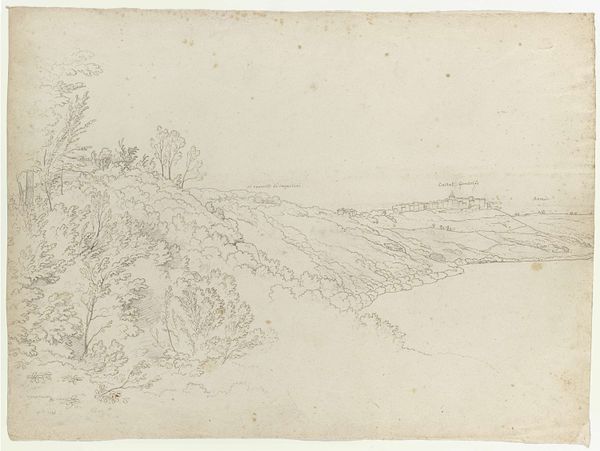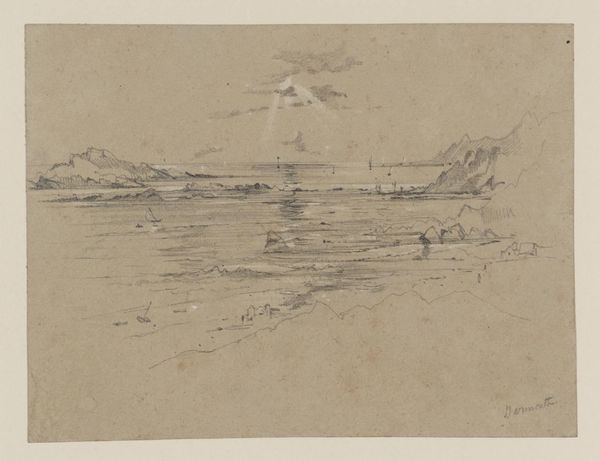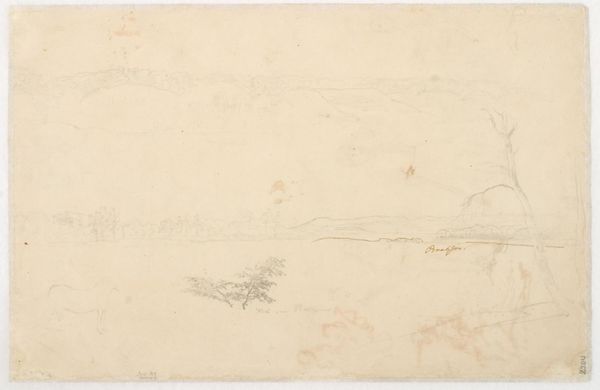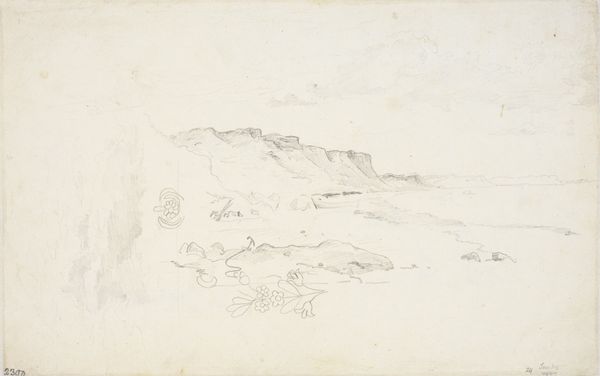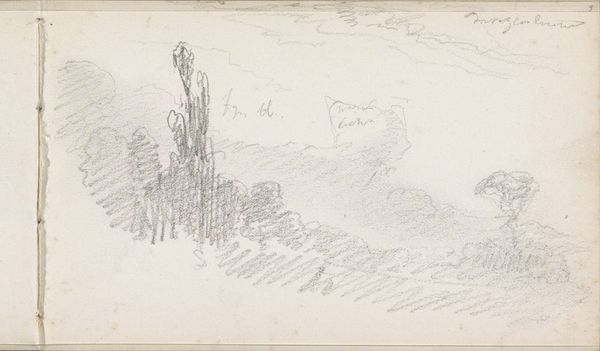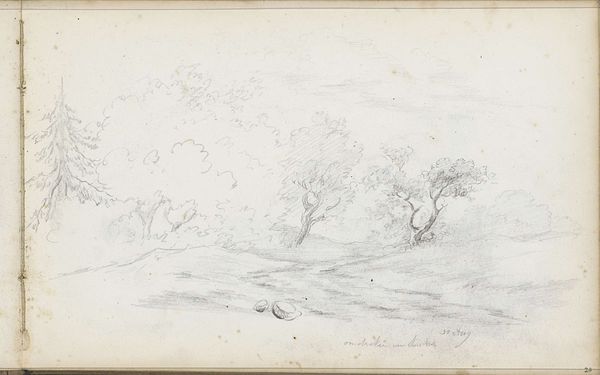
drawing, paper, pencil
#
tree
#
drawing
#
pencil sketch
#
landscape
#
paper
#
romanticism
#
pencil
#
sketchbook drawing
Copyright: Rijks Museum: Open Domain
Editor: This is Johannes Tavenraat’s "Heidelandschap met een boom," a pencil drawing from 1840 or 41. It's a fairly simple landscape, but there's something haunting about that lone tree. What do you see in this piece beyond just a pretty landscape? Curator: I see the beginnings of a dialogue, or rather a tension, between humanity and nature that really blossomed in the 19th century. Think about the social and political upheavals of the time – industrialization, urbanization… landscape becomes a site for both escapism and resistance. This lone tree becomes a symbol of resilience against that backdrop. Editor: Resilience… I like that. The tree *does* seem determined. Was Tavenraat consciously making a political statement? Curator: Perhaps not overtly. But artists operate within a cultural context. Romanticism, the style ascribed to this work, was partly a response to the Enlightenment’s emphasis on reason. The focus shifted to emotion, to the individual, to nature. Did Tavenraat grapple with questions of Dutch identity in his time? What role did landscape painting have in expressing feelings of national pride or even discontent? Those are questions we need to be asking. Editor: That's a helpful context. It makes me wonder, could the "empty" landscape also reflect anxieties of the era? Curator: Precisely! It’s not just about pretty scenery. What anxieties might those empty spaces evoke? What histories are buried beneath the surface of that seemingly untouched landscape? Think about land ownership, access, and the ways different social classes interacted with nature. Editor: I hadn't thought of it that way. I was just seeing a landscape. Curator: Art rarely exists in a vacuum. This drawing, while seemingly simple, can open a window into complex social and political dynamics of its time. Editor: I’ll definitely look at landscapes differently from now on. It’s not just about the aesthetic; it’s about the story behind the scenery.
Comments
No comments
Be the first to comment and join the conversation on the ultimate creative platform.

